Loet Leydesdorff
Topic Modelling of Empirical Text Corpora: Validity, Reliability, and Reproducibility in Comparison to Semantic Maps
Jun 04, 2018



Abstract:Using the 6,638 case descriptions of societal impact submitted for evaluation in the Research Excellence Framework (REF 2014), we replicate the topic model (Latent Dirichlet Allocation or LDA) made in this context and compare the results with factor-analytic results using a traditional word-document matrix (Principal Component Analysis or PCA). Removing a small fraction of documents from the sample, for example, has on average a much larger impact on LDA than on PCA-based models to the extent that the largest distortion in the case of PCA has less effect than the smallest distortion of LDA-based models. In terms of semantic coherence, however, LDA models outperform PCA-based models. The topic models inform us about the statistical properties of the document sets under study, but the results are statistical and should not be used for a semantic interpretation - for example, in grant selections and micro-decision making, or scholarly work-without follow-up using domain-specific semantic maps.
Visualization and Analysis of Frames in Collections of Messages: Content Analysis and the Measurement of Meaning
Dec 29, 2011



Abstract:A step-to-step introduction is provided on how to generate a semantic map from a collection of messages (full texts, paragraphs or statements) using freely available software and/or SPSS for the relevant statistics and the visualization. The techniques are discussed in the various theoretical contexts of (i) linguistics (e.g., Latent Semantic Analysis), (ii) sociocybernetics and social systems theory (e.g., the communication of meaning), and (iii) communication studies (e.g., framing and agenda-setting). We distinguish between the communication of information in the network space (social network analysis) and the communication of meaning in the vector space. The vector space can be considered a generated as an architecture by the network of relations in the network space; words are then not only related, but also positioned. These positions are expected rather than observed and therefore one can communicate meaning. Knowledge can be generated when these meanings can recursively be communicated and therefore also further codified.
"Meaning" as a sociological concept: A review of the modeling, mapping, and simulation of the communication of knowledge and meaning
Mar 21, 2011



Abstract:The development of discursive knowledge presumes the communication of meaning as analytically different from the communication of information. Knowledge can then be considered as a meaning which makes a difference. Whereas the communication of information is studied in the information sciences and scientometrics, the communication of meaning has been central to Luhmann's attempts to make the theory of autopoiesis relevant for sociology. Analytical techniques such as semantic maps and the simulation of anticipatory systems enable us to operationalize the distinctions which Luhmann proposed as relevant to the elaboration of Husserl's "horizons of meaning" in empirical research: interactions among communications, the organization of meaning in instantiations, and the self-organization of interhuman communication in terms of symbolically generalized media such as truth, love, and power. Horizons of meaning, however, remain uncertain orders of expectations, and one should caution against reification from the meta-biological perspective of systems theory.
The semantic mapping of words and co-words in contexts
Jan 29, 2011


Abstract:Meaning can be generated when information is related at a systemic level. Such a system can be an observer, but also a discourse, for example, operationalized as a set of documents. The measurement of semantics as similarity in patterns (correlations) and latent variables (factor analysis) has been enhanced by computer techniques and the use of statistics; for example, in "Latent Semantic Analysis". This communication provides an introduction, an example, pointers to relevant software, and summarizes the choices that can be made by the analyst. Visualization ("semantic mapping") is thus made more accessible.
The Production of Probabilistic Entropy in Structure/Action Contingency Relations
May 05, 2010



Abstract:Luhmann (1984) defined society as a communication system which is structurally coupled to, but not an aggregate of, human action systems. The communication system is then considered as self-organizing ("autopoietic"), as are human actors. Communication systems can be studied by using Shannon's (1948) mathematical theory of communication. The update of a network by action at one of the local nodes is then a well-known problem in artificial intelligence (Pearl 1988). By combining these various theories, a general algorithm for probabilistic structure/action contingency can be derived. The consequences of this contingency for each system, its consequences for their further histories, and the stabilization on each side by counterbalancing mechanisms are discussed, in both mathematical and theoretical terms. An empirical example is elaborated.
Implicit media frames: Automated analysis of public debate on artificial sweeteners
Jan 25, 2010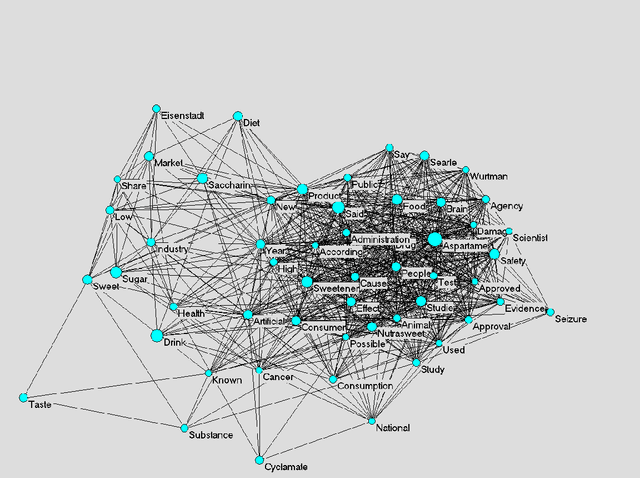
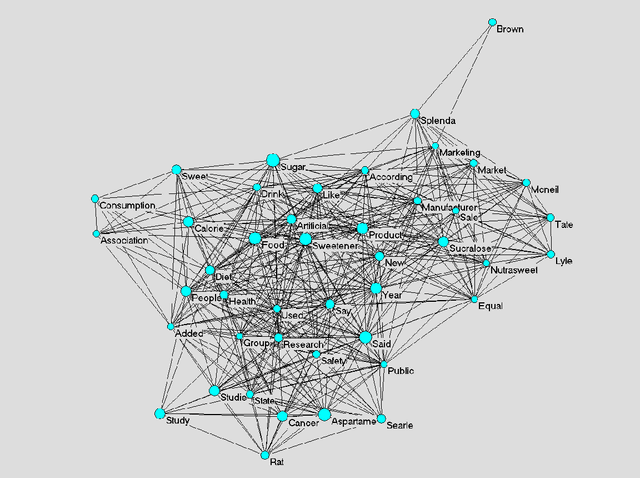
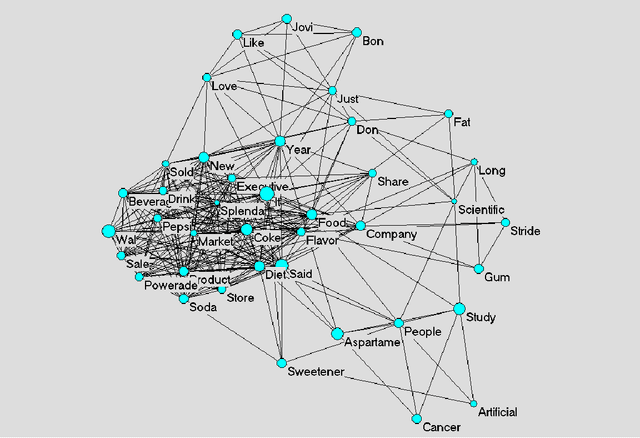
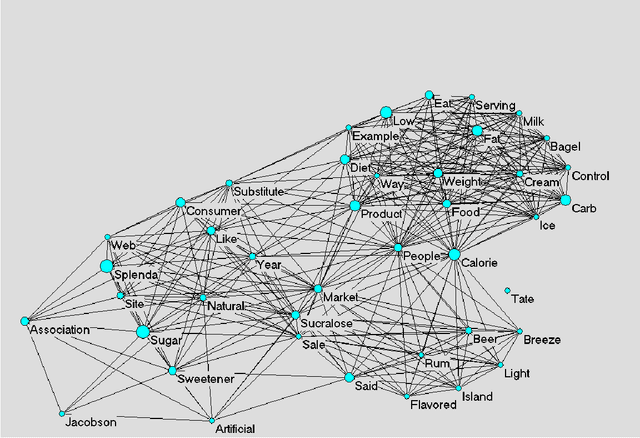
Abstract:The framing of issues in the mass media plays a crucial role in the public understanding of science and technology. This article contributes to research concerned with diachronic analysis of media frames by making an analytical distinction between implicit and explicit media frames, and by introducing an automated method for analysing diachronic changes of implicit frames. In particular, we apply a semantic maps method to a case study on the newspaper debate about artificial sweeteners, published in The New York Times (NYT) between 1980 and 2006. Our results show that the analysis of semantic changes enables us to filter out the dynamics of implicit frames, and to detect emerging metaphors in public debates. Theoretically, we discuss the relation between implicit frames in public debates and codification of information in scientific discourses, and suggest further avenues for research interested in the automated analysis of frame changes and trends in public debates.
Measuring the Meaning of Words in Contexts: An automated analysis of controversies about Monarch butterflies, Frankenfoods, and stem cells
Nov 17, 2009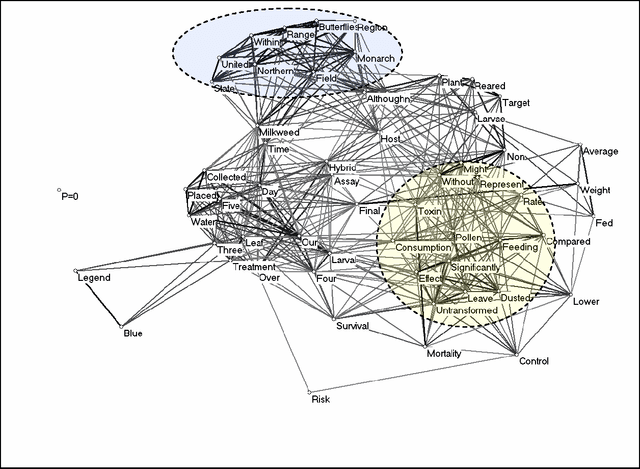
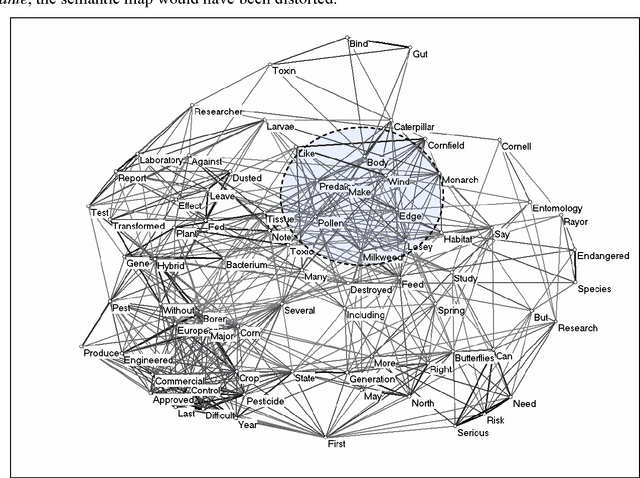
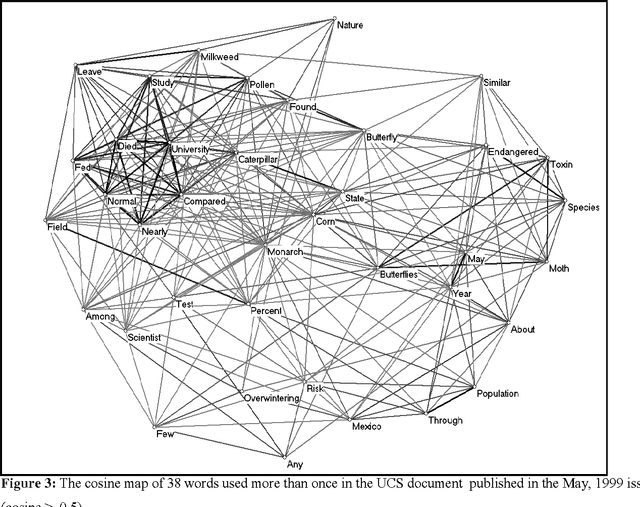
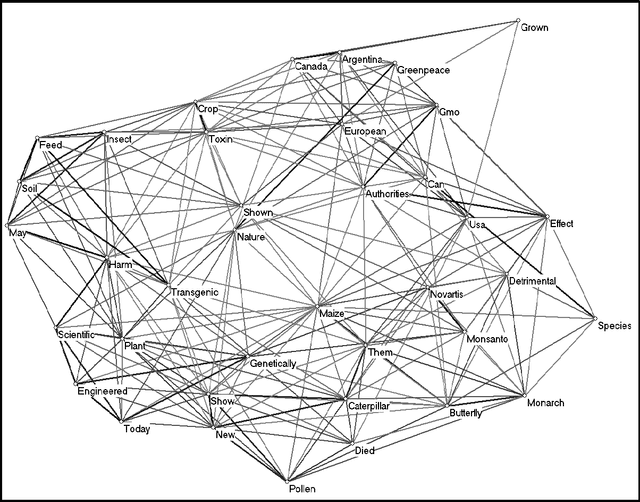
Abstract:Co-words have been considered as carriers of meaning across different domains in studies of science, technology, and society. Words and co-words, however, obtain meaning in sentences, and sentences obtain meaning in their contexts of use. At the science/society interface, words can be expected to have different meanings: the codes of communication that provide meaning to words differ on the varying sides of the interface. Furthermore, meanings and interfaces may change over time. Given this structuring of meaning across interfaces and over time, we distinguish between metaphors and diaphors as reflexive mechanisms that facilitate the translation between contexts. Our empirical focus is on three recent scientific controversies: Monarch butterflies, Frankenfoods, and stem-cell therapies. This study explores new avenues that relate the study of co-word analysis in context with the sociological quest for the analysis and processing of meaning.
Co-word Analysis using the Chinese Character Set
Nov 07, 2009
Abstract:Until recently, Chinese texts could not be studied using co-word analysis because the words are not separated by spaces in Chinese (and Japanese). A word can be composed of one or more characters. The online availability of programs that separate Chinese texts makes it possible to analyze them using semantic maps. Chinese characters contain not only information, but also meaning. This may enhance the readability of semantic maps. In this study, we analyze 58 words which occur ten or more times in the 1652 journal titles of the China Scientific and Technical Papers and Citations Database. The word occurrence matrix is visualized and factor-analyzed.
 Add to Chrome
Add to Chrome Add to Firefox
Add to Firefox Add to Edge
Add to Edge